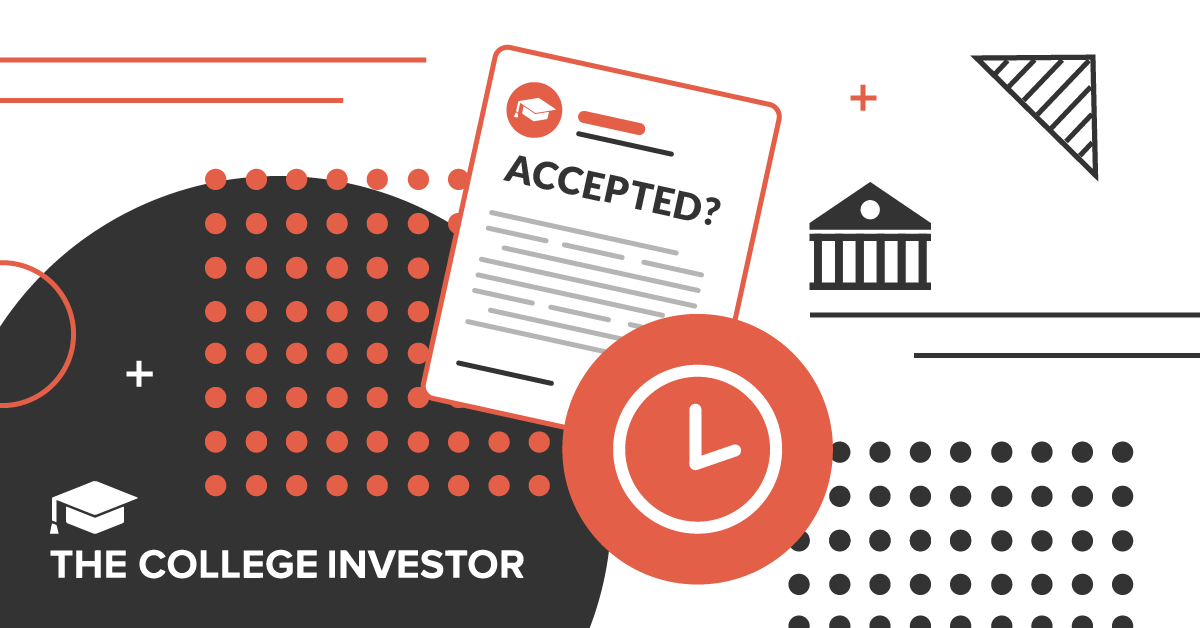
Source: The College Investor
Being placed on a college admissions waitlist can create a mixed bag of emotions for applicants. On one hand, it isn’t an outright rejection, but on the other, it can feel as though you're being left on the sidelines.
After all the effort you’ve put into essays, interviews, and extracurriculars, being placed on a waitlist can be discouraging and frustrating. But understanding how a waitlist actually functions—and more importantly, what your odds of getting in might be—can help ease some of that uncertainty and inform your next steps.
In this article, we’ll dig into how the college waitlist process works, factors that influence acceptance from a waitlist, and what you can do to improve your chances. We’ll also look at real data from UC Berkeley's 2022 admissions cycle to give you a sense of how waitlist odds play out in reality.
What Is A Waitlist And Why Do Colleges Use It?
Each year, college admissions teams face the unpredictable exercise of identifying exactly how many of the students they admit will actually enroll. This is known as the “yield rate,” and it’s a critical metric for colleges who consistently look to fill their incoming classes without overshooting or leaving seats empty. To manage this, admissions teams sometimes turn to offering certain qualified applicants a spot on their waitlist. Over the next few months, a portion of admitted students will decline their offers. This means enrollment spots open up and waitlisted students can get a chance at admission.
Each college uses their waitlist differently. However, waitlists are typically created in the spring (after March or April), after initial acceptance letters have been sent out. Once waitlisted students receive their official admissions decision, they’re often asked whether they’d like to remain on the waitlist. If you’re on the waitlist, you’re typically required to confirm your interest by filling out a form or sending a letter to the admissions office. This signals your ongoing commitment to the school, which can be a factor if spots open up.
Odds Of Being Accepted From A Waitlist
The question of the hour is this: What are the odds of actually getting in if I’m waitlisted?
Unfortunately, waitlist odds are generally low, particularly at highly selective schools. According to data from the National Association for College Admission Counseling (NACAC), highly selective colleges tend to have waitlist acceptance rates below 10%, while more moderately selective schools may have rates hovering around 20%. In most cases, students should approach a waitlist offer with cautious optimism—it’s an opportunity, but one with no guarantees.
UC Berkeley Example: 2022 Waitlist Statistics
To understand how this process plays out, let’s look at a real-world example. In 2022, UC Berkeley, one of the most competitive schools in the University of California school system, offered 7,001 qualified applicants a place on its waitlist. Out of those, 4,820 students decided to accept the offer and remain on the waitlist. In the end, 1,191 of those who were originally waitlisted were admitted.
This means about 17% of the students waitlisted at UC Berkeley ultimately gained admission. While this might sound promising, remember that Berkeley is a large public university with higher enrollment needs. Many private, highly selective institutions admit far fewer students from their waitlists each year—sometimes it’s fewer than 5% or none at all.
Factors That Affect Waitlist Acceptance Rates
Each college’s approach to managing its waitlist is unique, but a few common factors can influence whether a waitlisted student ultimately gains admission:
- Yield Rates: If a college’s yield rate—the percentage of admitted students who enroll—is lower than anticipated, they may need to admit more students from the waitlist. For example, if a significant number of students decline their offer of admission in favor of other schools, more spots open up for waitlisted students. Schools with unpredictable or low yield rates are more likely to lean on their waitlists to fill classes.
- Demonstrated Interest: Some schools consider a student’s ongoing interest in attending when determining who to admit from the waitlist. By sending a letter of continued interest, updating the admissions office on recent achievements, or even just filling out a confirmation form promptly, you can show that you’re committed to attending if accepted. In competitive admissions environments, this level of demonstrated interest can make a difference.
- Class Composition Goals: Admissions teams strive to create a balanced and diverse incoming class, not only in terms of demographics but also in terms of academic interests, geographic distribution, and extracurricular talents. If the initial admitted pool is short on a particular type of student—say, musicians or applicants from a certain state—a college may look to the waitlist for candidates who fit that profile.
- Institutional Priorities: Each college has specific goals and strategic priorities that influence admissions decisions. For example, a college expanding its computer science department may give waitlist preference to students with strong interest in STEM. Similarly, a college that values geographical diversity might prioritize out-of-state or international students from the waitlist if enrollment from those groups is lower than expected.
The Emotional Reality Of Being Waitlisted
Getting waitlisted is an emotional experience. It can feel like you’re stuck in a state of limbo, waiting on a response that could alter your future. However, being waitlisted isn’t necessarily a reflection of your skills and qualifications. In many cases, it’s simply a matter of space. Keep in mind that admissions teams regularly report having far more qualified applicants than they have spots available for.
Steps To Take If You’re Waitlisted
If you’re on a waitlist, it’s important to stay proactive while managing expectations. Here are some steps you can take to maximize your chances of being admitted:
- Confirm Your Interest: Most schools ask students on the waitlist to confirm whether they’re still interested in attending. Make sure to complete this process as soon as possible, as this can signal your eagerness to enroll.
- Write a Letter of Continued Interest: A letter of continued interest, sometimes called a LOCI, can help bolster your case. Your letter should be concise but genuine. Use it to reiterate your interest in the school, explain why it’s a top choice for you, and update the admissions team on any significant accomplishments since you submitted your application, such as awards, grades, or new extracurricular involvement.
- Update with Relevant Information: If you have new SAT/ACT scores, a recent achievement, or additional academic updates, consider sending them to the admissions office. Some schools welcome updates, while others don’t; it’s a good idea to check the school’s policy to avoid overstepping.
- Accept an Offer Elsewhere: Since a waitlist offer doesn’t guarantee admission, it’s wise to secure your place at another college by their deposit deadline. This way, you’ll have a guaranteed spot for the fall, and you won’t feel pressured if the waitlist offer doesn’t materialize.
Should You Appeal Your Waitlist Status?
In some cases, applicants might wonder if they should reach out to appeal their waitlist status. However, it’s generally not recommended. Admissions teams are accustomed to receiving additional information from waitlisted students, and contacting them repeatedly could be perceived negatively. The best approach is to follow their guidelines, provide any requested updates, and let your application speak for itself.
Final Thoughts on Waitlist Strategies
While being waitlisted is often disappointing, it’s important to remember that many students do get admitted from a waitlist. Also try to consider the bigger picture of why waitlists exist, then focus on what you can do to set yourself up for future success. Staying focused on presenting yourself as a committed, well-qualified candidate will speak for itself.
Ultimately, college is just one chapter in your educational journey. Whether or not you gain admission from a waitlist, your college experience—and your potential for success—isn’t limited by one decision. Embrace your options, make the most of the college experience that welcomes you, and remember that no matter where you go, it’s your passion, resilience, and curiosity that will carry you forward.

Allison’s passion lies in decoding the ways of the world to help put others on a path to success. She likes to ask big questions, and it’s her goal to find answers to share with you. A self-acknowledged transplant to the Pacific Northwest, Allison likes to write about finance, policy, fitness, and anything else that sparks her curiosity.
Editor: Colin Graves
